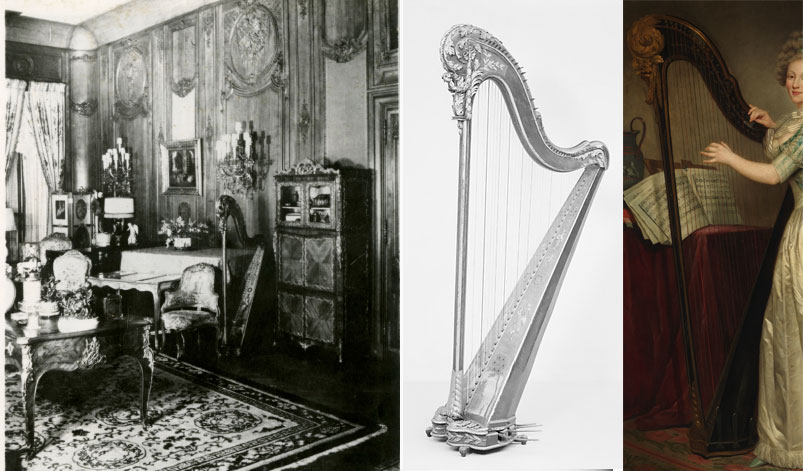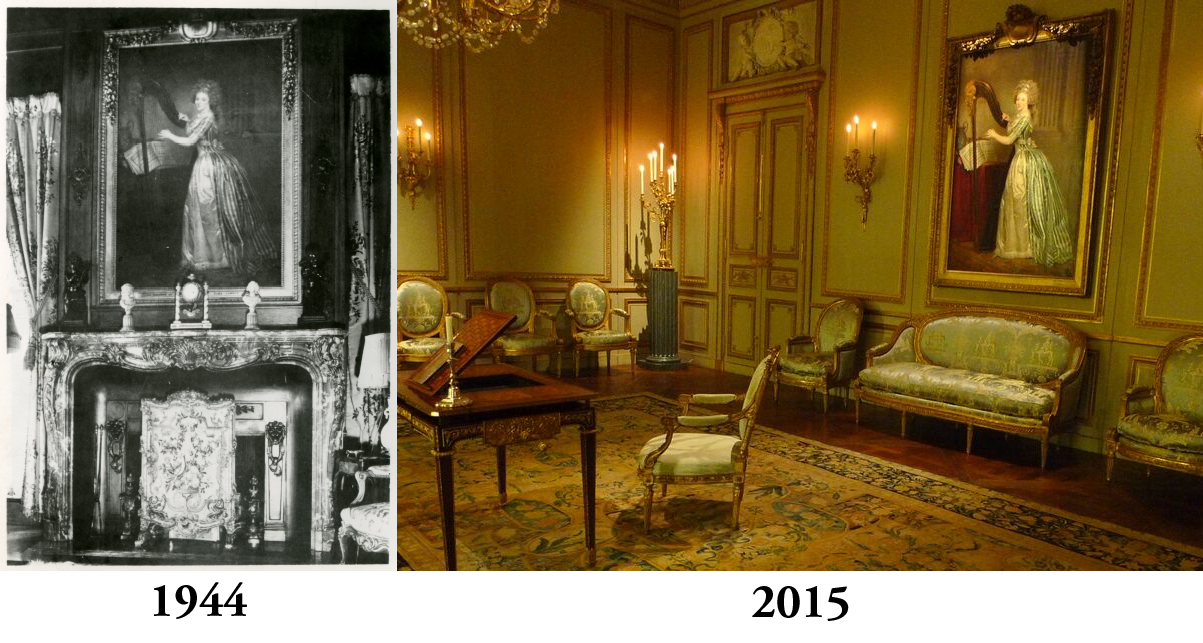Before coming to its present home in the Tessé Room, Rose Ducreux’s Self-Portrait with a Harp was owned by Mrs. Jeanette Dwight Bliss, a New York based collector. Mrs. Bliss acquired the portrait at auction in 1905, where it was attributed to Elisabeth Vigée-Lebrun, portraitist to Marie Antoinette. The attribution held particular appeal for Mrs. Bliss, who felt drawn to the French queen like many of her contemporary Gilded Age collectors. Like Mrs. Alva Vanderbilt, who acquired Marie Antoinette’s gilt-bronze and lacquer Riesener secretaries, located on either side of the Tessé Room, Mrs. Bliss purchased a harp that had once belonged to Marie Antoinette. The harp and portrait were displayed prominently in her salon, and both objects were donated by her daughter, Susan Dwight Bliss, to the Metropolitan Museum in 1966.

Images of the Bliss Residence courtesy of Susan Dwight Bliss Collection, George J. Mitchell Dept. of Special Collections & Archives, Bowdoin College Library.
When originally installed, the Tessé Room would not have had a painting where Ducreux’s hangs today; instead, a large fabric panel covered the wall. An additional wooden panel was created upon which to hang the portrait, visually unifying the objects related to Marie Antoinette under a portrait that does not depict the queen, but that is intended to be evocative of her. Family portraits were traditionally hung on the walls at royal residences, and Marie Antoinette’s mother, Queen Maria Theresa of Austria, had her own room filled with gilt bronze, lacquer panels, and portraits of her family.
